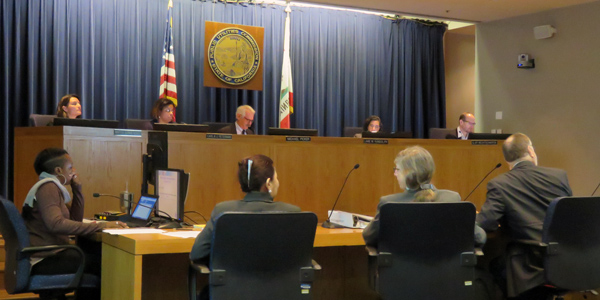By Jason Fordney
California regulators have approved new measures aimed at wildfire prevention, as utilities face growing scrutiny over fires that have occurred in the state over the last decade.
At its meeting in San Francisco on Thursday, the California Public Utilities Commission also approved a solar incentives program targeting low-income residents, among other decisions. But the CPUC deferred a vote on the retirement of the Diablo Canyon nuclear plant, which has sparked disagreements around the recovery of shutdown costs. (See PG&E Disputes ALJ’s Diablo Canyon Recommendation.)
Focus on Wildfires, Utilities
The CPUC approved more stringent wildfire protections for utilities, creating a “high fire-threat” district where correction of fire safety hazards will be prioritized.
“This is one of the areas where we are working hard to be at the forefront of utility safety programs” and represents “a major rewrite of the fire prevention rules for utility poles,” CPUC President Michael Picker said.
“Most of the elements here are not specifically driven by climate change, but they accept and acknowledge that the scope of the problem is changing,” Picker said, noting that high-hazard fire zones have grown to 44% of the state landscape. The decision requires new vegetation management and more stringent wire-to-wire clearances, among other measures.
Speaking during the public comment period, Southern California Edison President Ronald Nichols told the commission that the Thomas Fire in the Los Angeles area is threatening transmission lines and has caused some outages, but only about 500 customers have been affected. The company issued a press release Dec. 11 saying that state investigations “now include locations beyond those identified last week as the apparent origin of these fires. SCE believes the investigations now include the possible role of its facilities.”
Recent fires in California, including the massive Thomas Fire, have been particularly destructive and increased the focus on utilities over their possible role. (See California Fires Spark CAISO Transmission Emergency.) The CPUC recently denied San Diego Gas & Electric’s request to recover the costs of 2007 fires from ratepayers. (See Besieged CPUC Denies SDG&E Wildfire Recovery.) Pacific Gas and Electric is also facing investigation and lawsuits over the October fires in Northern California.
Low-income Solar Program
The CPUC passed a measure that implements the framework for a solar incentive program for multifamily housing, including goals, funding, administration and creating a new statewide program administrator. The program is to be financed by $100 million annually from PG&E, SDG&E, SCE, Liberty Utilities and PacifiCorp’s greenhouse gas auction proceeds.
The measure implements Assembly Bill 693, passed in 2015, which creates the Multifamily Affordable Housing Solar Roofs Program. The incentive program will be run by the new administrator and subsidize the costs of solar generation on certain types of multifamily affordable housing. It will allocate net energy metering tariff credits associated with the system’s generation to tenants and common areas of the property. The bill established the program for low-income households that would otherwise be unable to install on-site solar generation.
Picker expressed concerns over the long-term viability of the program because of tax proposals currently under consideration in Congress. Commissioner Martha Guzman Aceves was assigned the initiative.
Guzman Aceves cast the lone “no” vote against a proposed statewide marketing and outreach program for residential rate reform, which was assigned to Picker. The CPUC opened a rulemaking to examine investor-owned utilities’ rate structures, the transition to time varying and dynamic rates, and other statutory obligations.
CPUC Resolutions on CCAs, RMRs
The decisions at the CPUC’s regular meeting came in a week when the agency separately issued several new resolutions that received attention in the industry.
One resolution sets up a decision that community choice aggregators be subject to the same resource adequacy obligations as electric utilities. (See California Proposes Resource Adequacy Obligations for CCAs.)
Another resolution sets up a vote next month in response to controversial reliability-must-run agreements signed between CAISO and Calpine to keep the company’s Yuba City and Feather River natural gas units online. The CAISO Board of Governors expressed reservations about the agreements, funded by ratepayers, when it approved them last month. (See Board Decisions Highlight CAISO Market Problems.) The increasing use of RMRs is drawing negative attention for keeping natural gas units operating when they would otherwise retire.
Finally, the CPUC on Friday issued a proposed resolution that would place a moratorium beginning Jan. 11, 2018, on new commercial and industrial customer gas connections in the Los Angeles County area that would rely on Southern California Gas’ Aliso Canyon storage facility.




